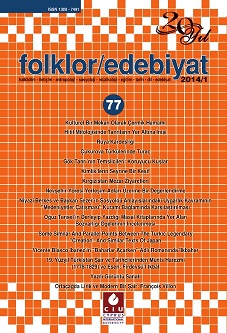Some Similar and Parallel Points Between the Turkic Legendary “Creation” and Similar Texts of Japan
Some Similar and Parallel Points Between the Turkic Legendary “Creation” and Similar Texts of Japan
Author(s): Mehmet Kara, Ersin TeresSubject(s): Cultural history, Customs / Folklore, Metaphysics, Social Philosophy, Sociology of Religion
Published by: Uluslararası Kıbrıs Üniversitesi
Keywords: Japanese mythology; comparison; mythology; Turkic mythology; creation;
Summary/Abstract: Turks and Japanese nations have lived in close geographic regions through long ages. Some similarities and common features can be found between mythologies of different nations that lived next to each other or in close geographic regions for centuries. In this context, Turk and Japanese nations are two community which have some common features and similarites in terms of cultural and mythological elements. In this paper, we will make a point of Turkic and Japanese mythologies in terms of creation and compare Turkic legendary “Creation” and similar texts of Japan and ascertain common features of them. It will firstly checked the features of Japanese mythology which have been affected by other religions (Christianity, Judaism, Buddhism etc.) and beliefs in the basic sources about Japanese mythology. Because, a lot of elements which fall within the other religions and beliefs may have been put in Japanese and other Asian mythologies. Ultimately, common mythological features will be identified. After identifying these features, the connections and relationship between Turkic and Japanese mythologies will be revealed. Creation, the beginning of creation, the process of creation, processing of heaven and hell, sacred places, sacred objects, views on nature, particular names in mythologies (person, animal, object, etc.), extraordinary events, cases and elements, view of humans to Gods, view of Gods to human beings can be considered from a comparative perspective.
Journal: Folklor/Edebiyat
- Issue Year: 20/2014
- Issue No: 77
- Page Range: 189-196
- Page Count: 8
- Language: English

